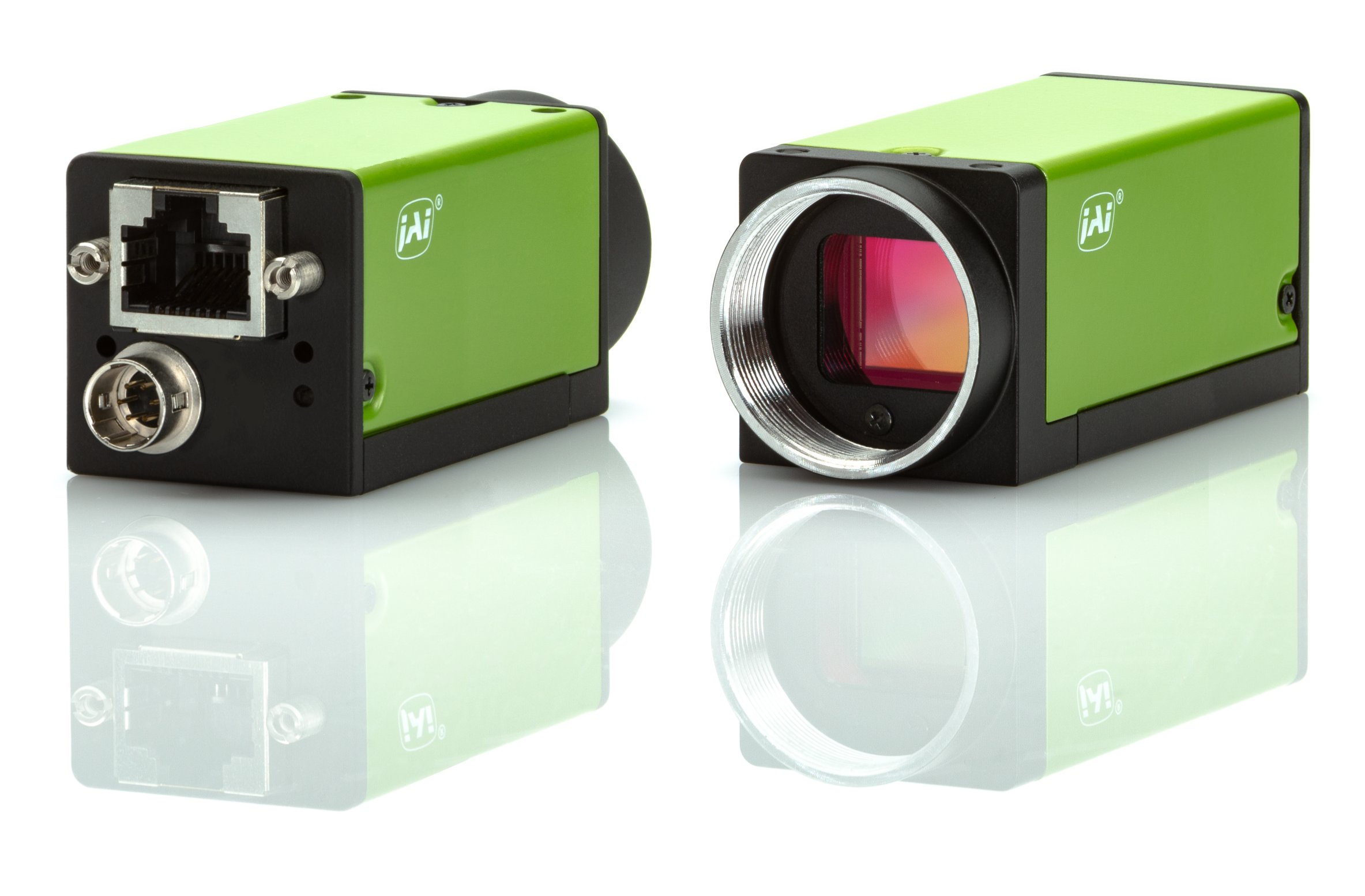COPENHAGEN – 28 September 2022 – JAI today announced the launch of 12 more Go-X Series small machine vision cameras featuring GigE Vision interfaces operating at 5GBASE-T (5 GigE) speeds. Like the 24 Go-X models launched earlier this year, the new cameras are equipped with the latest Sony Pregius S CMOS sensors and have resolutions ranging from 5.1 megapixels to 24.5 megapixels.
Pregius S sensors feature backside illumination to support smaller pixel sizes without sacrificing imaging performance. JAI has leveraged this technology to provide customers with significantly higher resolution in a small form factor. The 2.74 µm pixel size of the Pregius S sensors means that even the new 24.5-megapixel Go-X Series cameras have a 29 mm x 29 mm front plate and a 1.2" optical format compatible with C-mount lenses. Camera length is 68 mm.
The specific resolutions of the new cameras are:
-
5.1 megapixels (2472 x 2064 pixels)
-
8.1 megapixels (2856 x 2848 pixels)
-
12.4 megapixels (4128 x 3008 pixels)
-
16.2 megapixels (5328 x 3040 pixels)
-
20.3 megapixels (4512 x 4512 pixels)
-
24.5 megapixels (5328 x 4608 pixels)
Monochrome and color models are offered at each resolution. Color models provide raw Bayer output and include an in-camera 5x5 debayering function for RGB output. Formats include 8/10/12-bit monochrome, 8/10/12-bit Bayer, or 24/30/36-bit RGB output.
The 5GBASE-T interface of the new cameras, with its maximum data rate of 5 Gbps, lets users take advantage of the networking capabilities and the grabber-less connections of the GigE Vision standard, but at significantly higher frame rates than with the original 1 Gbps limit. The cameras can operate at speeds ranging from 22 fps for 24.5 megapixel output up to 103 fps for the 5.1-megapixel models. The interface features an auto-negotiation function that adjusts the camera's output to match the network's capabilities, including 2.5GBASE-T (2.5 Gbps) or 1000BASE-T (1 Gbps), depending on network configuration and available bandwidth.
All of the new models also include a flexible, sub-pixel scaling function called Xscale. Xscale provides an alternative to traditional binning which is limited to "whole" pixels, such as 2x1, 2x2, 4x4, etc. Instead, Xscale, supports the use of floating-point numbers to create “virtual” pixels that include fractional portions of pixels to help match pixel sizes, optical formats, and resolutions when replacing older cameras. In addition, while traditional binning can only be used on monochrome cameras, Xscale can be used with monochrome, Bayer, or RGB formats. Xscale can independently scale in the horizontal and vertical directions and can scale up to 16x the 2.74 µm base pixel size of the new cameras.
The new products bring the total number of Go-X Series models to 60, including 48 previously launched models equipped with GigE Vision (1000BASE-T), CoaXPress, and USB3 Vision interfaces. All Go-X cameras feature high shock and vibration ratings of 80G and 10G, respectively, and are designed to optimally dissipate heat to avoid breakdowns in typical industrial environments and under non-stop operating conditions. Like the original models, the newest 5GBASE-T models carry a six-year warranty.
About JAI
JAI is a manufacturer of high quality, industrial-grade cameras for the machine vision, transportation, food & beverage, aerospace, medical and scientific markets.
JAI’s broad product line features high performance progressive scan CMOS cameras with spatial resolutions up to 45 megapixels. It also includes a range of innovative multi-sensor prism-block cameras including both area scan and line scan models.
Physical interfaces include the Camera Link ® , GigE Vision ® , CoaXPress, and USB3 Vision high performance digital standards, as well as SFP+ fiber optic transmission.
JAI cameras help improve customer businesses in a variety of ways, whether by improving quality and accuracy, lowering costs, increasing yields, or simply enabling better service. In addition to cameras, JAI’s traffic solutions group is one of the world’s leading manufacturers of specialized traffic systems. Solutions are based on JAI developed hardware and software, which is often integrated with third-party products.















